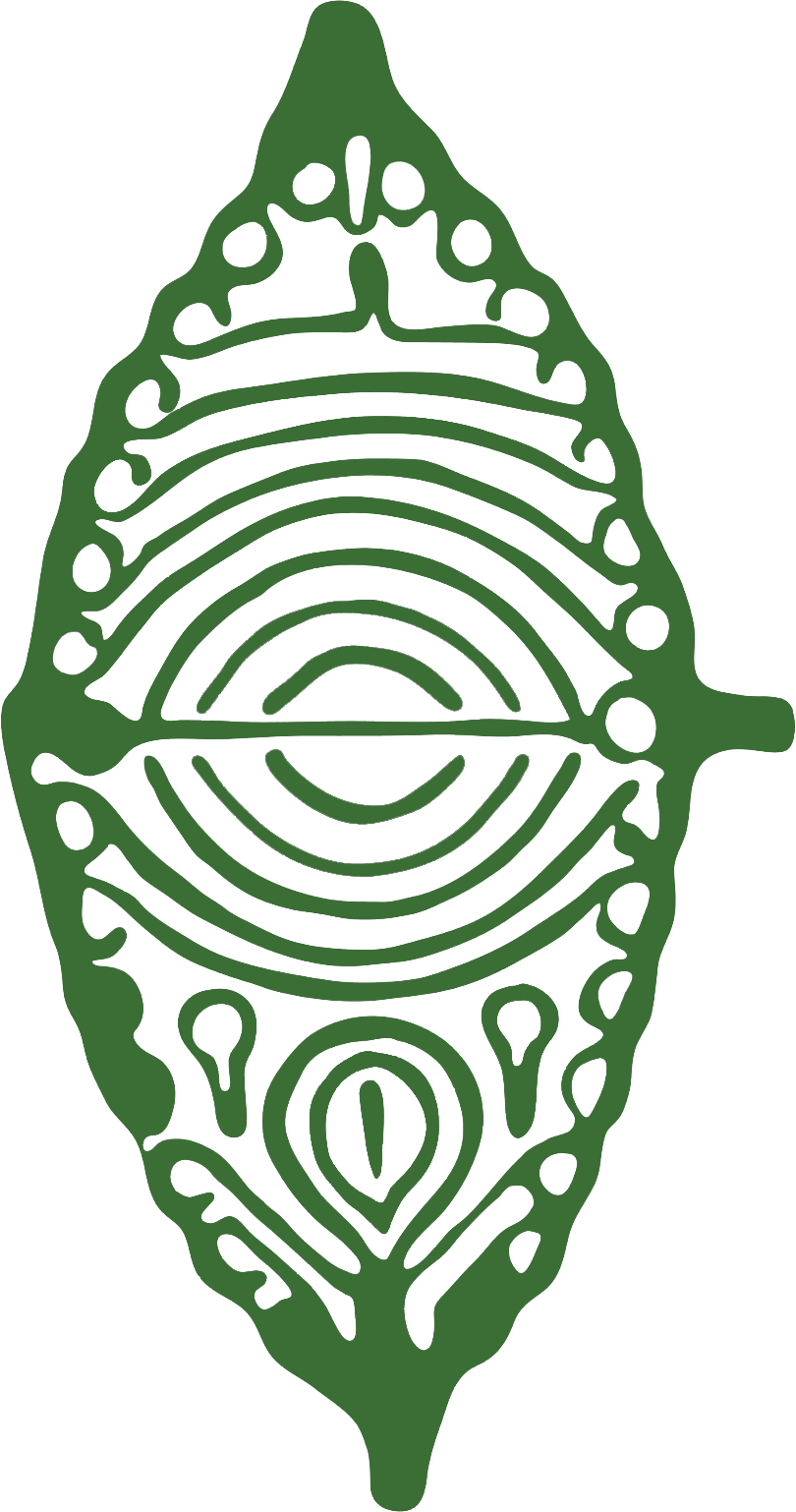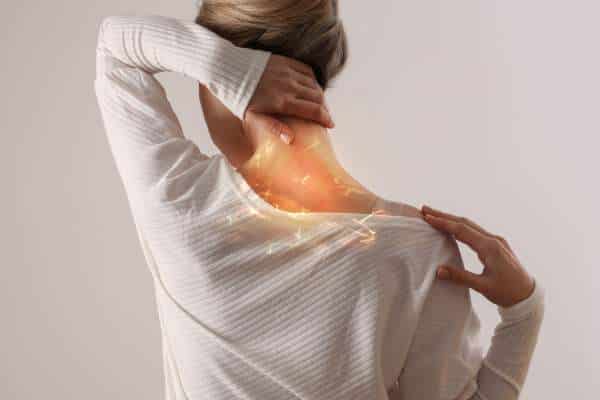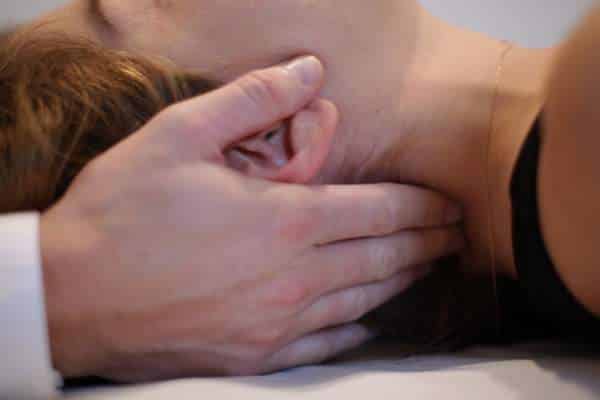Cervical osteoarthritis is one of the most common forms of spinal degeneration affecting millions of people. worldwide. Understanding this condition is essential not only for sufferers, but also for their families and caregivers, as the right knowledge can significantly improve the quality of life of those affected.
Cervical osteoarthritis involves wear and tear of the discs and joints in the neck, which can cause chronic pain and stiffness. The condition is often the result of natural ageing, but can also be accelerated by injury, improper posture or disease.
Osteopathy offers a holistic approach to the management of neck pain, using manual techniques to help improve alignment and mobility. Osteopathy focuses not only on relieving symptoms, but also on addressing the underlying causes of osteoarthritis. The osteopathic treatments can significantly improve flexibility and reduce dependence on medication, thus offering a better quality of life in the long term.
This article aims to provide a comprehensive guide to cervical osteoarthritis, ranging from its causes and symptoms, to treatment options and management strategies. By educating on these aspects, we aim to empower readers to recognise the early signs of the disease and know how to act effectively to mitigate its effects and improve their wellbeing.
What is cervical osteoarthritis?
Definition and explanation of the term "cervical osteoarthritis".
The cervical arthrosis is a type of wear and tear that affects the joints and discs of the cervical spine (neck). This condition is characterised by degeneration of the cartilage that facilitates smooth movement between the bones of the spine, which can lead to pain, stiffness and limited movement.
Difference between cervical osteoarthrosis and cervical osteoarthrosis
In the medical context, "cervical osteoarthritis" and "cervical osteoarthritis" often refer to the same condition, although the term "cervical osteoarthritis" is more commonly used. Both terms describe a form of degeneration of the joints of the cervical spine (neck), which is part of the natural ageing process but can be accelerated by factors such as injury, poor posture or genetic burden.
Cervical osteoarthritis
This term refers specifically to degeneration of the joints located in the cervical spine. Cervical osteoarthritis can cause wear and tear of the cartilage and the development of osteophytes (bone spurs), often resulting in stiffness and pain in the neck. It can also lead to compression of the cervical nerves, causing symptoms that radiate down the arms or up into the head.
Cervicoarthrosis
Although less common, this term is sometimes used to describe the same thing as cervical osteoarthritis, emphasising the location of the osteoarthritis in the cervical region of the spine. Some practitioners may use it to emphasise the presence of both joint and surrounding soft tissue symptoms due to degeneration.
Although you may encounter both terms, they generally refer to the same condition. The choice of term may vary according to geographic region or the preferences of the medical professional, but both describe degeneration of the joints of the cervical spine leading to symptoms of pain and restriction of movement.
Difference between osteoarthritis and other types of cervical conditions
Unlike other conditions such as herniated discs or spondylosis, the cervical arthrosis specifically involves age-related deterioration or wear and tear of cervical joints and discs. In contrast, conditions such as herniated discs may involve displaced or ruptured discs, and spondylosis refers to stiffness due to bony overgrowth.
Causes of cervical osteoarthritis
Genetic and environmental factors contributing to cervical osteoarthritis
Genetic predisposition may play an important role in the development of the disease. cervical arthrosismaking some people more susceptible than others. In addition, environmental factors such as overweight, lack of exercise, and previous injuries also contribute significantly.
Impact of lifestyle, such as posture and work activities
Lifestyle has a considerable impact on cervical health. Prolonged postures, especially in work environments where the head is kept tilted forward or repetitive neck movements are performed, can exacerbate the risk of developing cervical arthrosis. Maintaining proper posture and performing specific exercises can help mitigate these risks.
Symptoms of cervical osteoarthritis
Cervical osteoarthritis can manifest itself in various ways, depending on the degree of degeneration and the specific areas affected. Below is a detailed description of the most common symptoms and how to distinguish between common and severe symptoms.
Detailed description of common symptoms
- Neck painThis is usually the most obvious symptom. It may be constant or it may appear only after certain movements.
- StiffnessLimitation in range of neck movement, especially noticeable in the morning or after periods of inactivity.
- Joint soundsCrunching or popping sounds when moving the neck, due to rubbing of the worn joint surfaces.
What are the symptoms of cervical osteoarthritis?
In addition to the above symptoms, others may include:
- Headachesoriginating at the base of the skull or at the back of the head, due to tension in the cervical muscles.
- Muscle fatigueTiredness in the muscles of the neck and shoulders, caused by the extra effort needed to compensate for stiffness and pain.
- Irradiation of the pain: The pain may spread from the neck to the arms or to the upper back.
How to differentiate severe symptoms from common symptoms
Serious symptoms of cervical osteoarthritis that require immediate medical attention include:
- Weakness in arms or handsThis may indicate significant nerve compression.
- Coordination disturbancesDifficulties in writing, manipulating small objects or loss of balance.
- Loss of sensitivityNumbness or tingling in the arms, hands or fingers.
These symptoms may suggest a progression of cervical osteoarthritis to more serious complications, such as cervical myelopathy, which is a compression of the spinal cord and requires evaluation and treatment by a specialist to prevent permanent damage and improve the patient's quality of life.
Table differentiating common vs. severe symptoms in cervical osteoarthritis
| Symptom | Common Description | Description Serious |
| Neck pain | Pain that is constant or occurs with certain movements. | Persistent and worsens over time. |
| Stiffness | Limited neck movement, especially in the morning. | Stiffness that does not improve with rest or moderate activity. |
| Weakness in arms or hands | May indicate significant nerve compression, requires immediate evaluation. | Significant loss of muscle strength, affecting daily activities. |
| Loss of sensitivity | Numbness or tingling in arms, hands or fingers, requires medical attention. | Extensive loss of sensation that may progress. |
| Coordination disturbances | Difficulty in writing or loss of balance suggests serious problems. | Severe movement or coordination problems that affect quality of life. |
What is cervical rectification?
Cervical rectification is a change in the normal curvature of the neck. In a healthy cervical spine, there is a gentle C-shaped curvature known as cervical lordosis, which helps to evenly distribute the weight of the head over the spine and absorb shock during movement. However, when this curvature is flattened or rectified, it is referred to as cervical rectification.
This condition can be caused by a number of factors, including:
- TraumaAccidents such as whiplash can lead to curvature rectification.
- Prolonged inappropriate posturesWorking for hours at a computer or continuous use of mobile devices without proper posture can contribute to this condition.
- Natural wear and tearSpine: With age, it is common for the structures of the spine to suffer from wear and tear that can affect its curvature.
- Stress and muscle tensionChronic stress can lead to persistent tension in the neck muscles, which in turn can alter the cervical curvature.
Symptoms of cervical rectification can include neck pain, stiffness, headache, and in more severe cases, it can affect the nerves causing radiating pain, tingling or weakness in the arms or hands.
Treatment for cervical rectification usually involves a multidisciplinary approach:
- PhysiotherapyTo improve mobility and strengthen the neck muscles.
- Osteopathy and chiropracticThese therapies can help improve spinal alignment and relieve pressure on the nerves.
- Postural correction exercisesThese help to correct postural habits that may have contributed to the condition.
- MedicationAnti-inflammatories and analgesics can be used to manage pain during the recovery process.
It is important to seek medical advice if cervical rectification is suspected in order to obtain a proper diagnosis and an effective treatment plan to prevent future complications.
Disease progression
The cervical arthrosis is a condition that tends to progress gradually if not managed properly. Understanding the stages of its development, how it evolves over time and its long-term impact can help patients make informed decisions about their health.
Stages of cervical osteoarthritis development
Cervical osteoarthritis develops in various stages, from initial mild changes to more severe conditions that may require significant interventions:
- Initial stageEarly signs include occasional stiffness and mild pain that is usually managed with lifestyle changes and medication.
- Moderate stageWear and tear is more evident, and symptoms may include more constant pain and loss of flexibility. Physical therapies are commonly recommended at this stage.
- Advanced stageIt is characterised by severe pain and considerable limitation of movement. More aggressive intervention such as corticosteroid injections or surgery may be necessary.
How the condition evolves over time without treatment
Without treatment, cervical osteoarthritis can progress from mild discomfort to significant disability. The articular cartilage continues to wear away, leading to direct bone friction and the formation of osteophytes that can further restrict movement and cause severe pain. For more information on this process, sites such as the Spanish Society of Rheumatology y the National Institute of Arthritis provide detailed resources.
Long-term impact on quality of life
The long-term impact of cervical osteoarthritis without proper management can be considerable:
- Chronic painPain can become constant and severe, affecting all areas of daily life.
- Mobility limitationStiffness and pain limit the ability to move, which can affect the ability to perform daily activities.
- DependencyIn advanced stages, there may be an increasing reliance on pain medications and, potentially, others for assistance in daily living.
- Psychological problemsConstant pain management can lead to problems such as depression and anxiety.
Given the potential progression of cervical osteoarthritis and its impact, it is essential to seek early diagnosis and treatment. Osteopathic intervention can offer significant relief and help manage symptoms effectively, slowing or even halting disease progression.
Treatments available
The management of the cervical arthrosis includes a variety of treatments that can be tailored according to the needs and severity of each patient's symptoms. It is crucial to understand the options available to optimise pain relief and improve quality of life.
Conventional treatment options: medication, physiotherapy
- MedicationAnalgesics, such as paracetamol and non-steroidal anti-inflammatory drugs (NSAIDs), are often prescribed to manage pain and inflammation. In more severe cases, stronger medications may be considered under strict medical supervision.
- PhysiotherapyPhysiotherapy plays a crucial role in the treatment of cervical osteoarthritis. Specific exercises aim to improve mobility and strengthen the neck muscles, thus reducing the load on the cervical joints.
To learn more about these techniques, sites such as University of Navarra Clinic provide resources and practical guidance on conventional treatments.
"Cervical osteoarthritis treatment": innovative approaches and effectiveness
- Advanced therapiesTreatment advances include options such as laser therapy or electrotherapy, which can help reduce pain and inflammation without the use of drugs.
- Corticosteroid injectionsFor severe cases, injections can provide rapid relief of symptoms by significantly reducing inflammation in the affected joints.
Importance of tailoring treatment to the individual case
Each patient with cervical osteoarthritis may experience symptoms differently, making a personalised approach to treatment essential. Factors such as age, activity level and the presence of other medical conditions must be considered to create an effective and safe treatment plan.
Role of osteopathy in pain and symptom management
Osteopathy offers a holistic and personalised approach to the treatment of pain associated with cervical arthrosis. This discipline focuses on improving body function and mobility through manual techniques that can effectively relieve symptoms and significantly improve patients' quality of life.
Specific benefits of osteopathy for patients with cervical osteoarthritis
- Pain reductionOsteopathy is effective in reducing chronic pain through techniques that improve mobility and reduce tension in the affected areas.
- Improved mobilityOsteopathy: Through careful manipulations, osteopathy helps to restore the neck's natural range of motion, which is crucial for daily activities.
- Decreased stiffnessOsteopathic techniques can relieve neck stiffness, facilitating greater flexibility and comfort.
For more details on these benefits, resources such as the Spanish Institute of Osteopathy provide information and studies on the positive effects of osteopathy in the treatment of cervical osteoarthritis.
Links such as Official College of Osteopathy provide more information on how osteopathy can be integrated into the treatment of cervical osteoarthritis for effective disease management.
Useful osteopathic techniques: manipulations, recommended and forbidden exercises
- Gentle manipulationsOsteopathic manipulative techniques are applied to correct misalignments and improve the function of the cervical joints.
- Recommended exercisesSpecific exercises are advised to strengthen the neck muscles and improve posture, reducing the risk of aggravating the condition.
- Prohibited exercisesSome movements that may exacerbate pain or degeneration are avoided under osteopathic guidance, ensuring a safe and effective recovery.
Cases where osteopathy has been effective
Osteopathy has proven to be particularly effective in numerous clinical cases, where patients have experienced remarkable improvement after osteopathic treatment, even in situations where other conventional treatments have not been successful. Success stories and testimonials can be found on platforms such as Osteopathic Healthwhich document the effectiveness of osteopathy in the management of cervical osteoarthritis.
In summary, osteopathy offers a holistic approach that not only treats the symptoms, but also focuses on the underlying cause of pain and stiffness associated with cervical osteoarthritis, making it a valuable complementary option to conventional medical treatments.
Prevention and maintenance
Prevention plays a crucial role in the management of the cervical arthrosis. Adopting preventive strategies can help avoid the development or aggravation of this condition, which is essential to maintain a good quality of life.
Preventive strategies to avoid development or aggravation of cervical osteoarthritis
- Adopting a correct postureMaintaining proper posture, especially during long working hours, is essential to avoid excessive strain on the neck.
- Appropriate use of technological devicesIt is crucial to adjust the height and position of computer screens and mobile devices to avoid awkward postures that can contribute to the development of neck problems.
For more information on how to adopt appropriate ergonomics, sites such as Valencia Institute of Biomechanics offer practical guidance and advice.
Exercises to strengthen and maintain cervical flexibility
- Strengthening exercisesExercises that strengthen the muscles of the neck and upper back can help to better support the structures of the cervical spine.
- Flexibility exercisesGentle exercises that promote flexibility can help maintain mobility and prevent stiffness.
Tips on ergonomics and daily habits
- Workspace configurationAdjust chair, desk and monitor to appropriate heights to reduce neck strain.
- Active breaksIncorporate short breaks during long sedentary periods to stretch and move the body, especially the neck and back.
To learn more about specific exercises and healthy habits, the portal Musculoskeletal Health is an excellent resource.
This article has covered essential aspects of the cervical arthrosisThe main focus is on the definition, causes and symptoms, as well as available treatments and prevention strategies. It is important to highlight the relevance of addressing this condition from a multidisciplinary approach that includes both conventional medical treatments and alternative therapies such as osteopathy.
If you are experiencing symptoms of cervical osteoarthritis it is crucial to consult with professionals health care professionals to obtain a proper diagnosis and a personalised treatment plan. Early intervention can make a big difference in managing the disease and improving quality of life.
The continuing education on cervical health is vital. Staying informed about the latest research and recommendations can help people make informed decisions about their health and wellbeing. Taking a proactive approach to preventing and treating cervical osteoarthritis can not only relieve pain and discomfort, but also prevent more serious problems in the future.
FAQ
How to relieve cervical osteoarthritis pain?
To relieve pain caused by cervical osteoarthritis, you can apply heat or cold to the affected area, perform gentle stretching exercises recommended by a professional, and consider the use of painkillers or anti-inflammatory drugs under medical supervision. Physiotherapy is also effective in improving mobility and reducing pain.
What are the forbidden exercises for cervical osteoarthritis?
People with cervical osteoarthritis should avoid exercises that involve sudden movements or heavy loading on the neck, such as overhead weight lifting. It is important to consult a physiotherapist to tailor any exercise routine to your specific needs and avoid aggravating the condition.
Can cervical osteoarthritis cause dizziness?
Yes, dizziness can be a symptom of cervical osteoarthritis. This occurs when degenerative changes in the cervical vertebrae or inflammation affect the nerves or blood vessels supplying the brain, disrupting normal balance.
Is there a cure for cervical osteoarthritis?
Cervical osteoarthritis is a degenerative condition and has no cure, but symptoms can be effectively managed with treatment. The main focus of treatment is to relieve pain, improve mobility and minimise disease progression.
How serious is cervical osteoarthritis?
The severity of cervical osteoarthritis varies between individuals. In many cases, symptoms can be managed effectively with conservative treatment. However, in severe cases, more complex interventions, such as surgery, may be required, especially if there is significant nerve compression.
What tips are useful for managing cervical osteoarthritis?
Useful tips include maintaining proper posture, especially when using electronic devices, performing regular stretching and strengthening exercises, avoiding heavy lifting, and consulting a physiotherapist or pain management specialist regularly.
Can I develop cervical osteoarthritis in my 30s?
Although more common in older people due to natural wear and tear, cervical osteoarthritis can affect people in their 30s, especially if there are risk factors such as previous injury, strenuous physical activity involving the neck or predisposing genetic conditions.
What are the long-term consequences of cervical osteoarthritis?
Without proper treatment, cervical osteoarthritis can lead to decreased neck mobility, chronic pain and, in severe cases, nerve or spinal cord compression that could cause weakness in the arms or even more severe neurological problems.
How can I prevent the development of cervical osteoarthritis?
While some factors, such as genetics, cannot be modified, you can reduce the risk by maintaining good posture, avoiding repetitive trauma to the neck and performing exercises that strengthen and maintain neck flexibility.
What alternative treatments are available for cervical osteoarthritis?
In addition to conventional medical treatments, options such as acupuncture, osteopathy, and massage therapy may be beneficial. These methods can help relieve pain and improve mobility without the use of medication.










